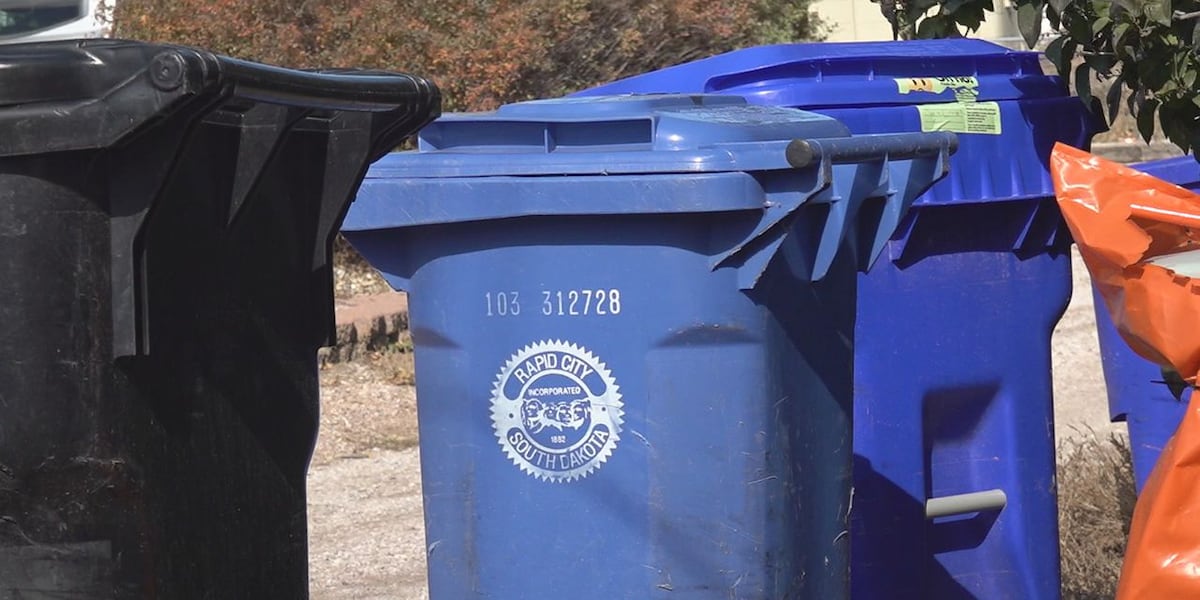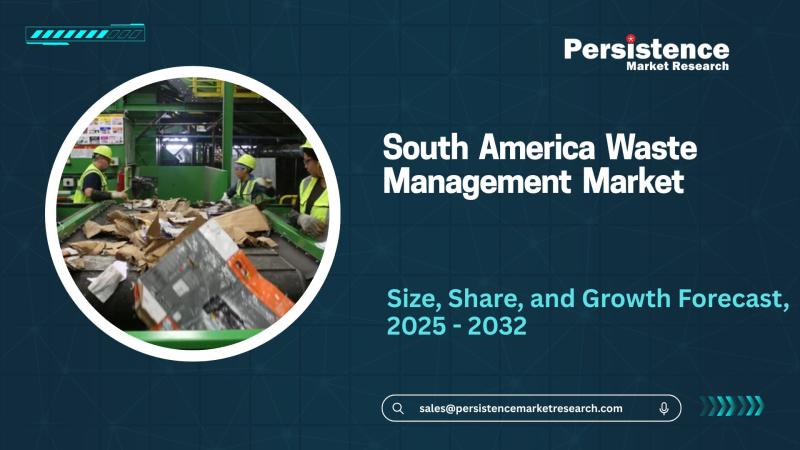Interstate Waste Services Acquires Seaside Waste Services – citybiz

Report on the Acquisition of Seaside Waste Services by Interstate Waste Services, Inc.
Executive Summary
Interstate Waste Services, Inc. (IWS), a vertically integrated provider of waste management services, has announced the strategic acquisition of Seaside Waste Services. This transaction expands IWS’s operational footprint into central and southern New Jersey, reinforcing its market position and enhancing its capacity to deliver sustainable waste solutions. The acquisition aligns with IWS’s growth strategy and its commitment to advancing key United Nations Sustainable Development Goals (SDGs) through its core business operations.
Strategic Rationale and Regional Impact
The acquisition is a key component of IWS’s ongoing expansion strategy within the tristate area. The primary objectives and impacts include:
- Market Expansion: Extending service coverage to new communities in central and southern New Jersey.
- Enhanced Service Capabilities: Strengthening the company’s ability to provide comprehensive waste collection, recycling, and disposal services.
- Regional Leadership: This move follows other strategic acquisitions, including Pinto Service, Inc., Oak Ridge Waste & Recycling, and Marangi Disposal, solidifying IWS’s position as a leading private waste management company in the region.
Alignment with Sustainable Development Goals (SDGs)
The acquisition and subsequent operational integration directly support several SDGs, reflecting IWS’s commitment to sustainable development.
SDG 11: Sustainable Cities and Communities
By expanding and enhancing municipal waste collection services, IWS contributes directly to Target 11.6, which aims to reduce the adverse per capita environmental impact of cities by improving municipal waste management.
- Integration of Seaside’s collection services improves waste management infrastructure for local communities.
- Ensures reliable and efficient waste disposal, which is critical for public health and urban environmental quality.
SDG 12: Responsible Consumption and Production
IWS’s vertically integrated model, which includes material recovery facilities, is fundamental to achieving sustainable production and consumption patterns.
- The company’s network of 33 material recovery and transfer facilities supports Target 12.5 by promoting the reduction, recycling, and reuse of waste materials.
- This acquisition expands the reach of these sustainable practices, diverting more waste from landfills and contributing to a circular economy.
SDG 8: Decent Work and Economic Growth
The transaction promotes sustained and inclusive economic growth by incorporating Seaside Waste Services’ existing workforce into the IWS family, supporting Target 8.5 for full and productive employment.
SDG 9 & SDG 13: Industry, Innovation, Infrastructure & Climate Action
IWS’s operational model emphasizes sustainable infrastructure and climate action.
- Sustainable Infrastructure (SDG 9): The company’s use of a rail-served solid waste landfill and a network of advanced facilities represents an investment in sustainable infrastructure (Target 9.4).
- Climate Action (SDG 13): IWS is a recognized leader in utilizing waste-by-rail transportation. This method significantly reduces vehicle miles traveled and associated greenhouse gas emissions, directly contributing to climate change mitigation efforts.
Operational Integration and Future Outlook
The integration of Seaside Waste Services into IWS’s operations includes the following assets:
- A team of employees specializing in collection and municipal services.
- A fleet of more than 40 vehicles.
This acquisition reinforces IWS’s operational capacity and its commitment to community-focused service. The company will continue to pursue growth while maintaining its core values of sustainability and operational efficiency, ensuring its expansion contributes positively to both the environment and the communities it serves.
Analysis of the Article in Relation to Sustainable Development Goals (SDGs)
1. Which SDGs are addressed or connected to the issues highlighted in the article?
-
SDG 11: Sustainable Cities and Communities
- The article focuses on Interstate Waste Services (IWS) providing “solid waste collection, recycling and disposal services” and “municipal services” in New Jersey, New York, and Connecticut. Effective waste management is a cornerstone of creating sustainable urban and community environments.
-
SDG 12: Responsible Consumption and Production
- IWS’s operations, which include “recycling” and “material recovery,” are directly linked to promoting sustainable production patterns by reducing waste and encouraging the reuse of materials. The company’s stated commitment to “sustainability” further supports this connection.
-
SDG 9: Industry, Innovation, and Infrastructure
- The article describes IWS’s infrastructure, including a “network of 33 material recovery, transfer, and transload facilities, as well as a rail-served solid waste landfill.” It also highlights an innovative approach: “utilizing waste-by-rail transportation,” which represents a sustainable infrastructure solution.
-
SDG 13: Climate Action
- A direct link is made to climate action when the article states that IWS is a “recognized leader in utilizing waste-by-rail transportation to reduce vehicle miles traveled and greenhouse gas emissions.” This is a specific corporate strategy aimed at mitigating climate change.
-
SDG 8: Decent Work and Economic Growth
- The acquisition represents economic growth for IWS. Furthermore, the article mentions the integration of Seaside Waste Services’ “team of employees” and the addition of “new team members into the IWS family,” which relates to employment and job retention.
2. What specific targets under those SDGs can be identified based on the article’s content?
-
Target 11.6: Reduce the adverse environmental impact of cities
- By 2030, reduce the adverse per capita environmental impact of cities, including by paying special attention to air quality and municipal and other waste management. The article’s entire focus is on the expansion of a company that provides “solid waste collection, recycling and disposal services” to municipalities, directly addressing this target.
-
Target 12.5: Substantially reduce waste generation
- By 2030, substantially reduce waste generation through prevention, reduction, recycling and reuse. IWS’s business model, which includes “recycling” and “material recovery” facilities, contributes directly to this target by diverting waste from landfills.
-
Target 9.1: Develop quality, reliable, sustainable and resilient infrastructure
- The article details IWS’s operation of critical waste management infrastructure, such as “transfer, and transload facilities” and a “rail-served solid waste landfill.” Their use of “waste-by-rail transportation” is an example of developing more sustainable infrastructure.
-
Target 8.5: Achieve full and productive employment and decent work
- The acquisition involves integrating Seaside’s “team of employees” into IWS. This action directly relates to maintaining employment within the context of corporate growth.
3. Are there any indicators mentioned or implied in the article that can be used to measure progress towards the identified targets?
-
Implied Indicator for Target 11.6: Amount of municipal solid waste collected and managed in controlled facilities
- The article implies this indicator by describing the expansion of IWS’s services and its operation of “33 material recovery, transfer, and transload facilities, as well as a rail-served solid waste landfill.” The growth of the company suggests an increase in the volume of waste being managed in these controlled facilities.
-
Implied Indicator for Target 12.5: Tons of material recycled
- The mention of “recycling services” and “material recovery” facilities implies that a measurable amount of material is being recycled. The expansion of these services would lead to an increase in the total tons of recycled materials.
-
Implied Indicator for SDG 13: Reduction in greenhouse gas emissions
- The article explicitly states that the company’s use of waste-by-rail transportation serves to “reduce vehicle miles traveled and greenhouse gas emissions.” This points to a clear, measurable indicator of progress in climate action.
-
Implied Indicator for Target 8.5: Number of jobs retained/created
- The statement that IWS will “integrate Seaside Waste Services’… team of employees” implies the retention of jobs, which is a measurable indicator of progress towards decent work.
4. Summary Table of SDGs, Targets, and Indicators
| SDGs | Targets | Indicators (Mentioned or Implied in the Article) |
|---|---|---|
| SDG 11: Sustainable Cities and Communities | Target 11.6: Reduce the adverse environmental impact of cities, particularly through municipal waste management. | Amount of municipal solid waste collected and managed in controlled facilities. |
| SDG 12: Responsible Consumption and Production | Target 12.5: Substantially reduce waste generation through recycling and reuse. | Tons of material recycled through “recycling services” and “material recovery” facilities. |
| SDG 9: Industry, Innovation, and Infrastructure | Target 9.1: Develop quality, reliable, sustainable and resilient infrastructure. | Development of sustainable infrastructure like “rail-served” facilities and “waste-by-rail transportation.” |
| SDG 13: Climate Action | Integrate climate change measures into strategies and planning (corporate level). | Reduction in “greenhouse gas emissions” and “vehicle miles traveled” through waste-by-rail transport. |
| SDG 8: Decent Work and Economic Growth | Target 8.5: Achieve full and productive employment and decent work. | Number of jobs retained through the integration of the acquired company’s “team of employees.” |
Source: citybiz.co

What is Your Reaction?
 Like
0
Like
0
 Dislike
0
Dislike
0
 Love
0
Love
0
 Funny
0
Funny
0
 Angry
0
Angry
0
 Sad
0
Sad
0
 Wow
0
Wow
0
























;Resize=805#)






















































